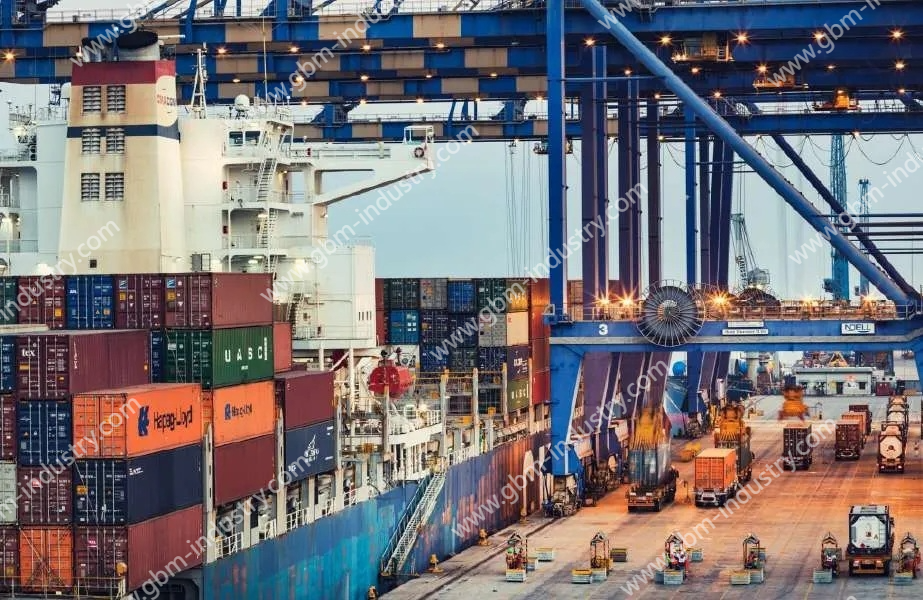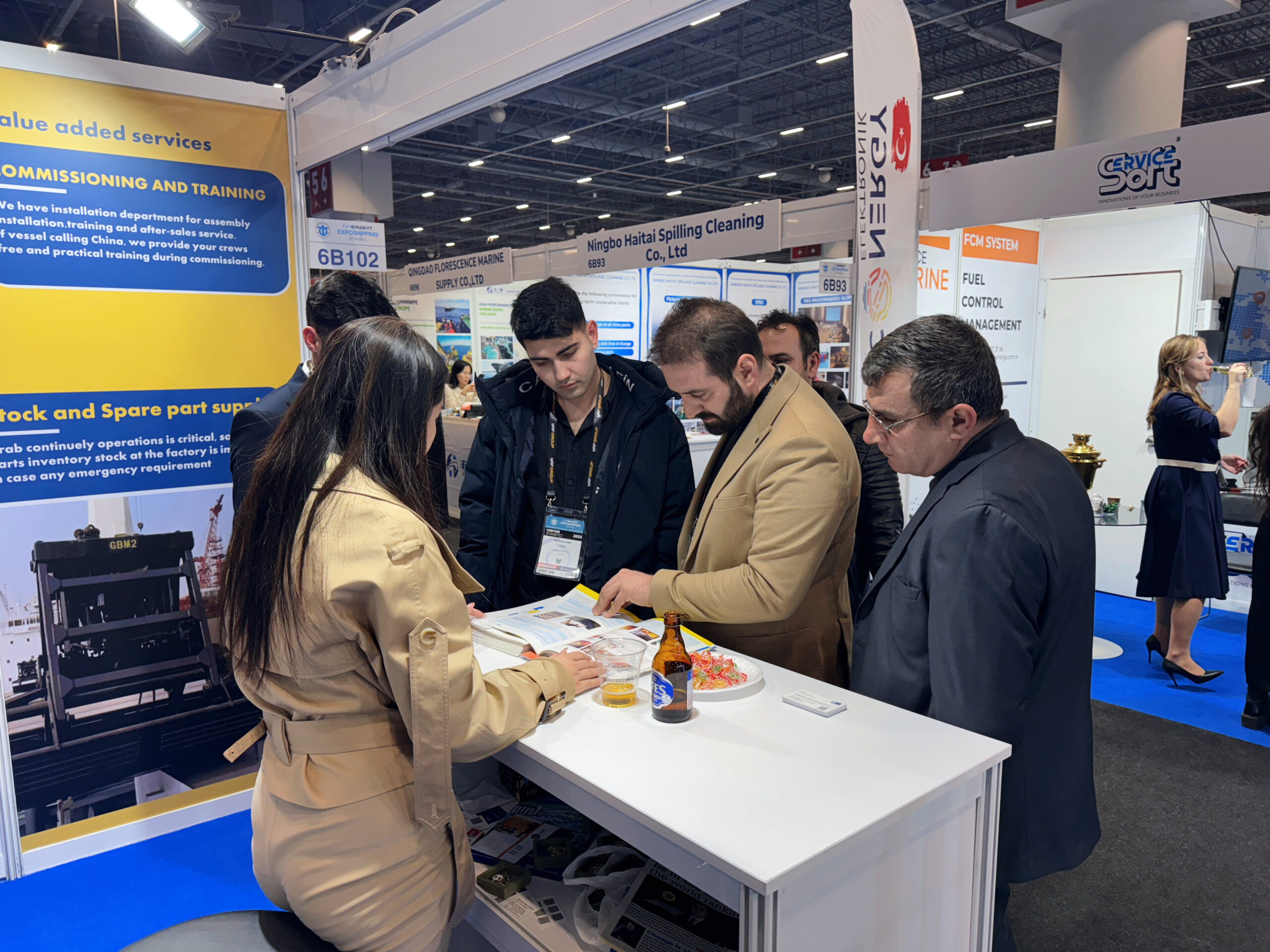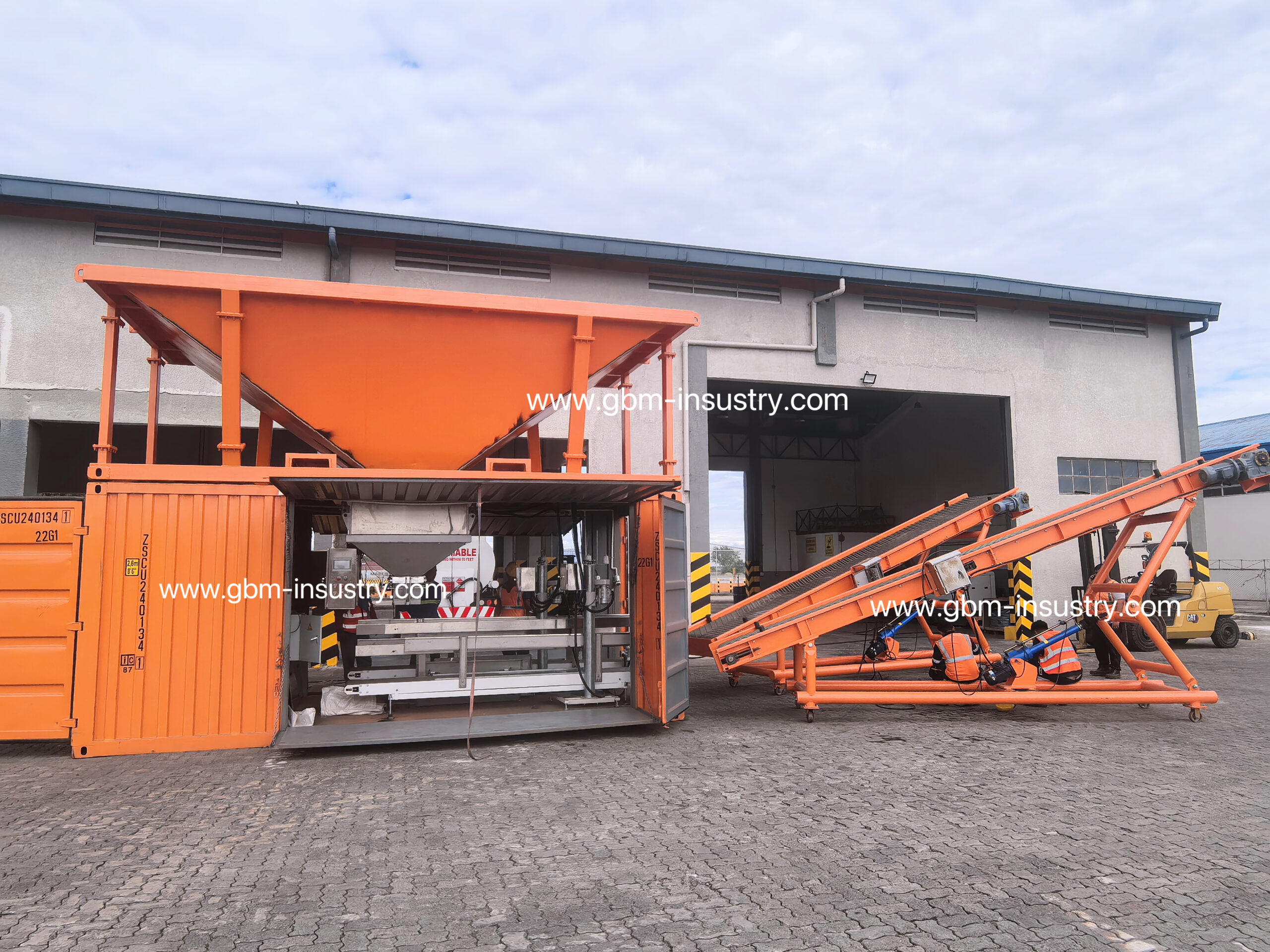Against the backdrop of global economic and trade integration, container shipping volumes have surged significantly, driving the trend toward larger container vessels and terminals. This has accelerated the pace of upgrading terminal handling equipment. As the primary handling equipment at container terminals, the operational capacity of ship to shore cranes (hereinafter referred to as “STS cranes”) largely determines the overall handling capability of container terminals.
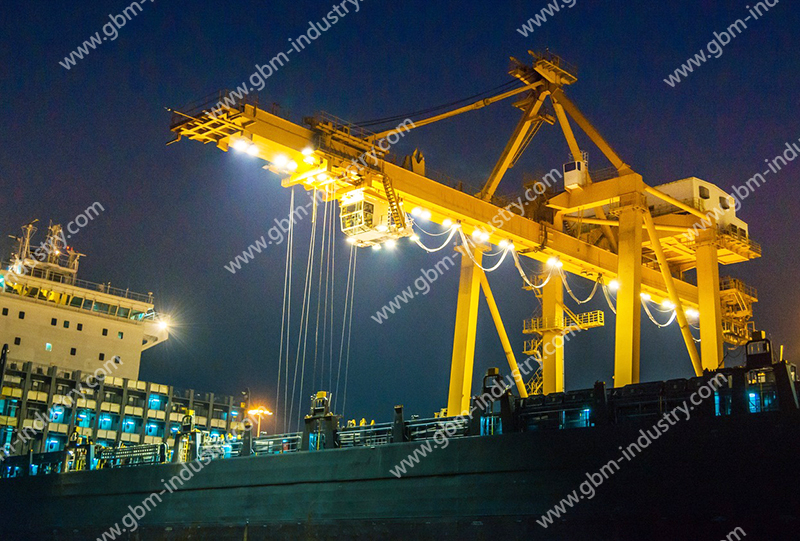
Review STS Crane Technology Development
China’s STS crane manufacturing industry has developed in tandem with the container transportation sector. From the emergence of the first-generation STS crane in the 1970s to the current fifth-generation STS crane models, China’s STS crane manufacturing industry has evolved from nothing to something, growing from small to large. It now holds over 80% of the global STS crane market share, significantly advancing China’s container transportation sector.
(1) First-Generation STS crane China’s STS crane manufacturing began in 1978. Key technical parameters of the first-generation STS crane were as follows: single trolley, single spreader configuration with an electric generator set. The spreader had a rated load capacity of 30.5 tons, a lifting height of 18 meters, and a reach of 28 meters. It could lift only one 20-foot container or one 40-foot container at a time, handling vessels with a capacity of less than 800 TEU. Limited by the technological development level of the time, the first-generation STS crane, while achieving the goal of moving from nothing to something, had mediocre technical performance and a relatively high failure rate.
(2) Second-Generation STS cranes Key technical parameters of second-generation STS cranes: Single-trolley, single-spreader configuration with thyristor DC speed control system. Spreader rated capacity: 45 tons. Lifting height: 25 meters. Outreach: 40 meters. Capable of lifting two 20-foot containers or one 40-foot container per lift. Suitable for handling container ships under 2000 TEU. Compared to first-generation STS cranes, second-generation models exhibit enhanced technical performance. Notably, the application of thyristor DC speed control systems provides a broader speed range and smoother acceleration/deceleration.
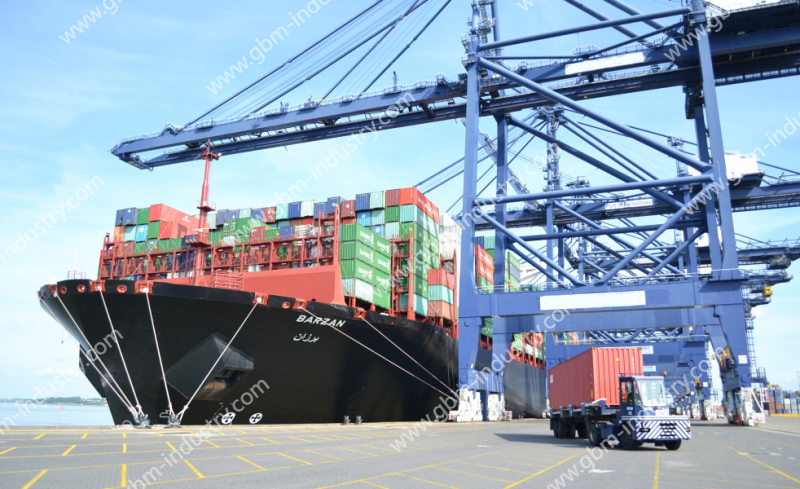
(3) Third-Generation STS Crane The primary technical parameters of the third-generation STS crane are as follows: It employs a single trolley dual-spreader configuration with an AC variable-frequency drive control system. The spreader has a rated load capacity of 50–65 tons, a lifting height of 32 meters, and a reach of 50 meters. It can simultaneously lift four 20-foot containers or two 40-foot containers per operation, handling container ships of up to 5,000 TEU. The technical performance of third-generation STS cranes achieved significant breakthroughs, particularly in enhancing single-operation container throughput, which substantially improves vessel loading/unloading efficiency.
(4) Fourth-Generation STS Cranes The primary technical parameters of fourth-generation STS cranes are as follows: Utilizing either a dual-trolley, dual-spreader configuration (40-foot) or a single-trolley, triple-spreader configuration (40-foot) with intelligent AC variable-frequency drive systems, with a rated load capacity of 70 tons, a lifting height of 42 meters, and a reach of 70 meters. Each operation can lift up to 6 twenty-foot containers or 3 forty-foot containers, handling vessels under 10,000 TEU. The technical performance of fourth-generation STS cranes continues to improve, with enhanced operational capabilities. Notably, the application of intelligent AC variable-frequency drives significantly boosts performance while substantially reducing energy consumption. With the advent of fourth-generation STS cranes, China’s STS crane manufacturing industry has transitioned from small-scale to large-scale development, capturing over 70% of the global STS crane market share.
(5) Fifth-Generation STS Cranes Key technical parameters of fifth-generation cranes include: dual-gantry, dual-spreader (40-foot) configuration with fully digital AC variable-frequency stepless speed control drives. Spreader rated load: 70 tons; lifting height: 50 meters; reach: 70 meters. Main trolley operates via remote manual control for auxiliary tasks, while the luffing trolley achieves fully automated operation, capable of handling the world’s largest container vessels. The fifth-generation STS crane incorporates numerous new technologies, exhibiting significant automation and intelligent features. A prime example is the dual-trolley automated STS crane manufactured by Shanghai Zhenhua Heavy Industry (Group) Co., Ltd. for Qingdao New Qianwan Container Terminal Co., Ltd.
Outlook for China’s STS Crane Technology Development
(1) Fully Automated STS Cranes After a vessel berths at the terminal, its position and container locations on deck fluctuate due to factors like vessel structure, water level, and waves. This complexity in container positioning during operations poses significant challenges for automating onboard container handling. Currently, China’s fifth-generation STS cranes achieve 90% automation. However, manual remote operation remains necessary below the ship’s safety height, preventing true full automation. It is foreseeable that with advancing automation technology, future STS cranes will continue evolving toward full automation.
(2) High-speed STS cranes can significantly enhance operational efficiency by increasing both the lifting speed of the spreader and the horizontal travel speed of the trolley. The operational conditions and environment of STS cranes are relatively simple, characterized by short intervals and continuous repetition of movements in their lifting mechanisms and trolley travel systems. This necessitates drive motors with excellent speed regulation capabilities. To achieve this, the drive motor must not only possess sufficient rated power and starting/stopping torque but also feature sensitive overload response capabilities and excellent ventilation and heat dissipation performance.
(3) Energy Storage STS crane The descent process of the crane’s hoisting mechanism involves energy conversion, during which the motor operates in generator mode. How to absorb, store, and utilize the energy generated by the motor during this process is a critical challenge for achieving energy conservation and reduced consumption in STS cranes.
(4) To accommodate ultra-large vessels, fifth-generation STS cranes now achieve lifting heights exceeding 50 meters above the rail surface. This results in increased unnecessary lifting movements of the main trolley during operations involving containers on lower decks and in cargo holds, leading to significant energy waste. Additionally, as STS crane height increases and spreader wire ropes lengthen, spreader sway and wire rope twisting intensify.
Although industry experts have conducted extensive research with some success, the uneven distribution of container weights and the influence of crosswinds during operations limit the effectiveness of anti-sway spreader technologies and anti-twist wire rope technologies. Designing an elevatable STS crane could help address these issues, but presents the following technical challenges: First, ensuring the crane’s lifting efficiency; second, preventing collisions between the crane and containers or the vessel when the crane lowers its operating height due to ship drift.
(5) Third-Trolley Gantry Crane The average operating cycle of the fifth-generation gantry crane’s main trolley is approximately 110 seconds, while the average cycle for the luffing trolley is about 70 seconds. This indicates that enhancing the operational efficiency of double STS cranes hinges on improving the main trolley’s efficiency, yet its potential for improvement is limited. Consequently, the industry has proposed the triple-gantry crane concept: adding a horizontal transport trolley to the double STS crane configuration to balance the operational cycles of the main trolley and luffing gantries. As shown in Figure 3: the ship-side trolley handles container loading/unloading from vessels, the horizontal transport trolley manages container lateral movement, and the land-side trolley handles container loading/unloading on land.
(6) Multi-functional STS cranes Future STS cranes will not only achieve higher handling efficiency but also integrate additional service functions into the loading/unloading process. This will streamline terminal operations, reduce operational costs, and save terminal space. Taking the operation of a dual-trolley STS crane as an example: the brief pause of ten to twenty seconds when a container rests on the crane’s transfer platform can be utilized to perform damage inspection, spray disinfection, radioactive material detection, container weighing, and twist lock installation/removal. Currently, Qingdao Port’s fully automated container terminal employs a model where the STS crane transfer platform handles information identification, damage inspection, and twist lock installation/removal. The twist lock robot alone reduces loading/unloading personnel by 50%.
We’re Your STS Crane Spare Parts Partner
In the demanding environment of port operations, the stable operation of STS cranes is critical to maintaining efficiency. As a specialized supplier of STS crane spare parts, GBM is committed to providing comprehensive, highly reliable support to port customers worldwide, serving as your trusted partner.
Our core strengths are threefold:
First, we deliver rapid and timely responses. Understanding that downtime represents significant losses for you, we’ve established an efficient supply chain system and maintain ample spare parts inventory. This enables swift fulfillment of your needs, ensuring required components reach your site in the shortest possible time. This drastically reduces equipment waiting periods and safeguards the smooth execution of your operational plans.
Second, we exclusively supply high-quality components and accessories. We rigorously select premium products from renowned domestic and international brands—from wire ropes and brackets to critical electrical control systems and sensors—ensuring every part delivers exceptional reliability, wear resistance, and corrosion resistance. This fundamentally safeguards the safe and stable operation of STS cranes while effectively extending equipment lifespan.
Finally, we provide professional technical services that extend beyond the products themselves. Our team of experienced engineers not only provides precise selection guidance but also offers expert advice and technical support for daily maintenance and periodic inspections, helping you prevent potential failures and optimize equipment performance.
Choosing GBM means choosing peace of mind and assurance. Backed by rapid response, grounded in high-quality products, and centered on professional services, we fully support the long-term stable operation of your STS crane equipment, creating greater value for the smooth operation of your port.
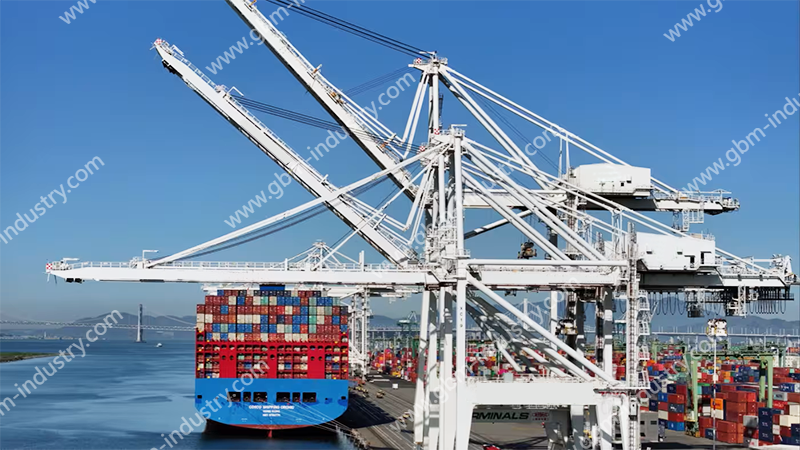
Conclusion
Over the past 30 years, while China’s STS crane manufacturing industry has achieved remarkable growth, the drawbacks of being large but not strong have gradually become apparent. Currently, “Made in China 2025” and “Internet Plus” are profoundly impacting China’s manufacturing sector, driving deep integration between manufacturing and next-generation information technology. China’s STS crane industry must seize this opportunity. Leveraging its existing strengths and innovation as its driving force, it should transition from low-cost competitive advantages to quality-driven efficiency, shift from high-energy consumption and high-pollution extensive manufacturing to energy-efficient and environmentally friendly production, and evolve from purely manufacturing-oriented operations to design-driven, innovation-focused service-oriented manufacturing. This transformation will enable the industry to capture the high ground in the new competitive landscape and achieve sustainable development. We are confident that China’s STS crane manufacturing industry will reach new heights in the future, producing more advanced and high-end STS cranes that showcase the brilliance of Chinese innovation and continue to contribute to the development of China’s container transportation industry.



